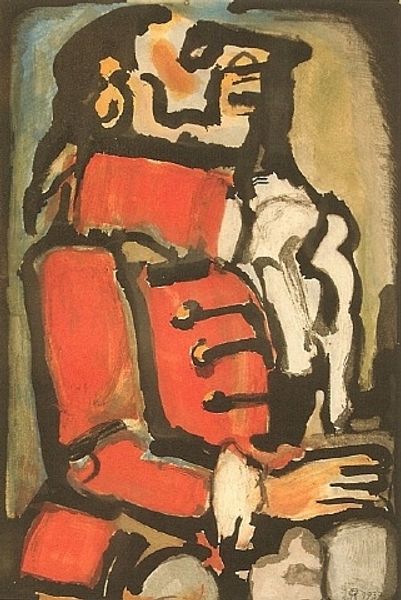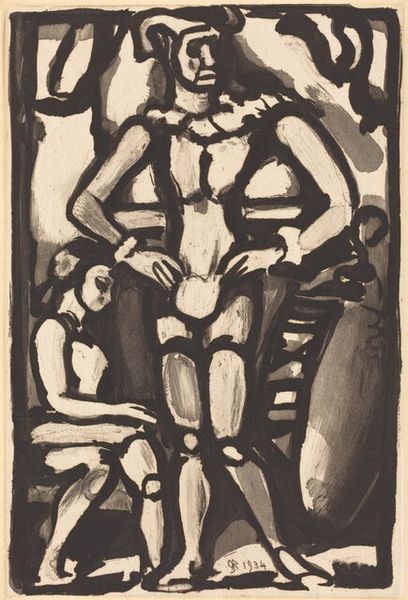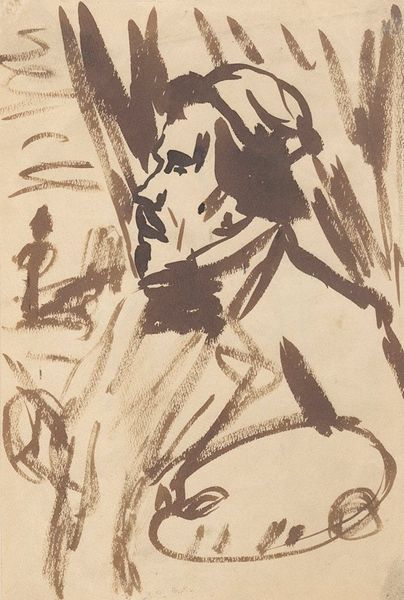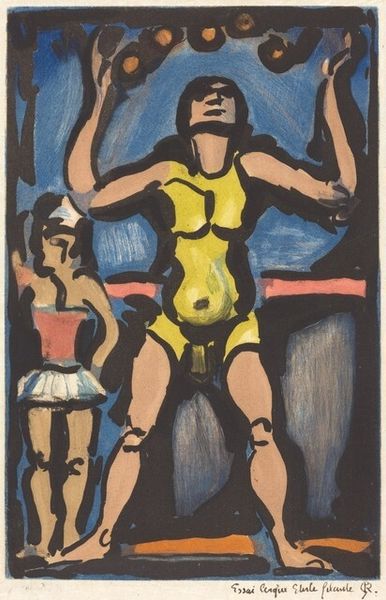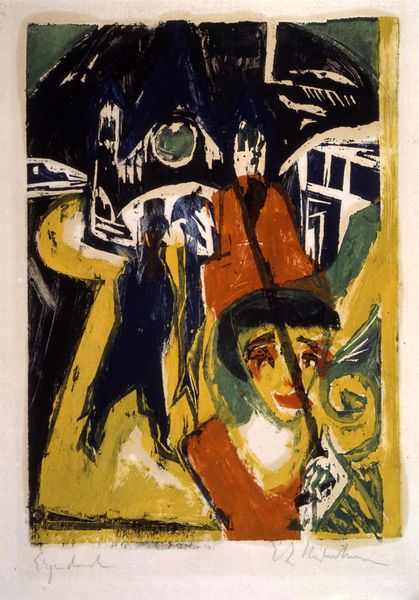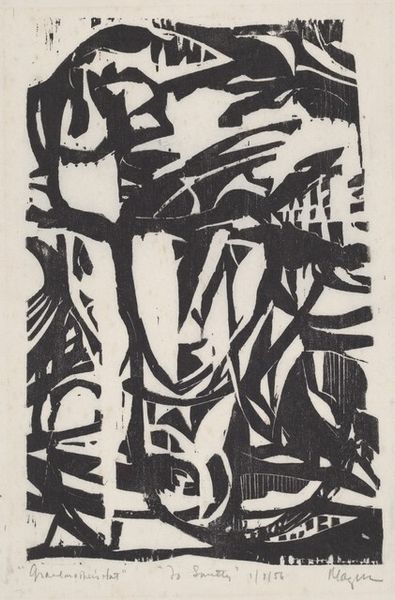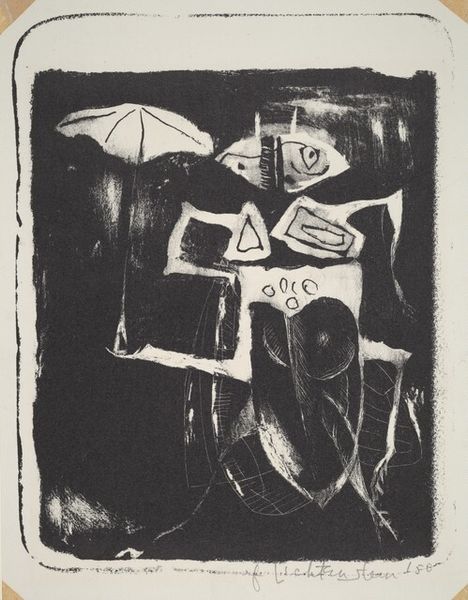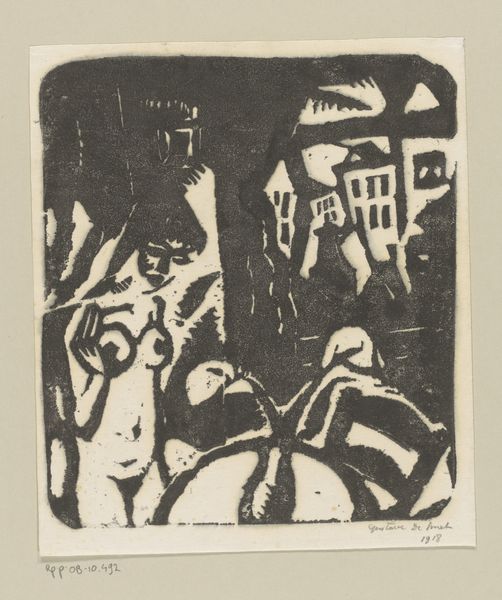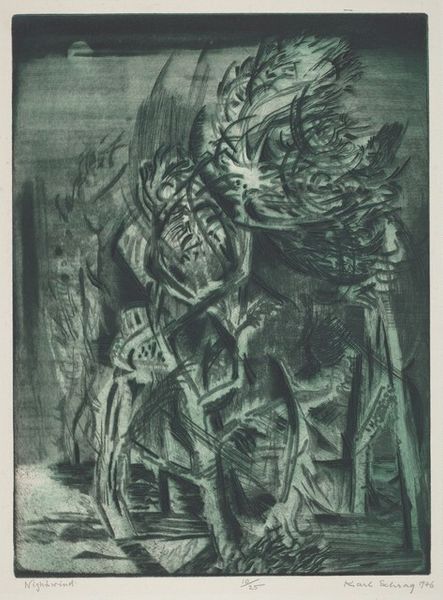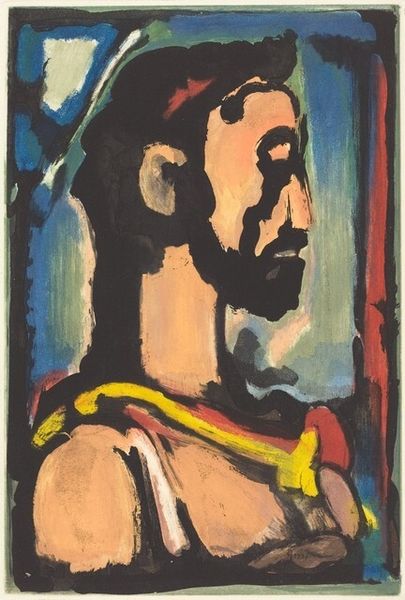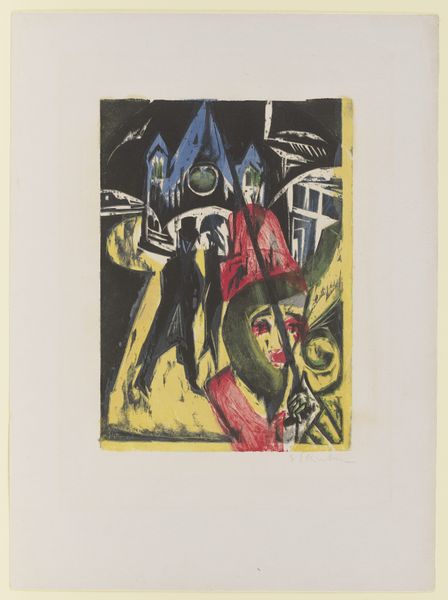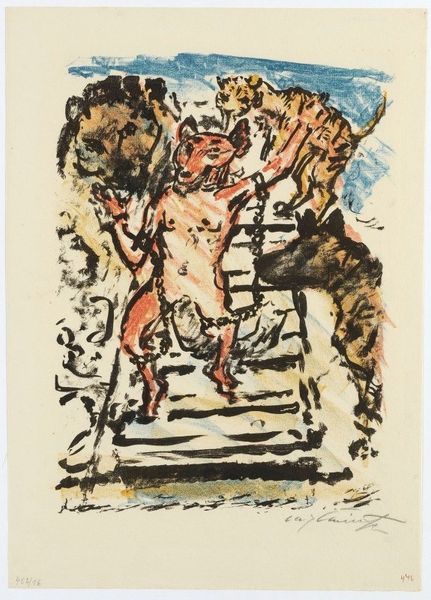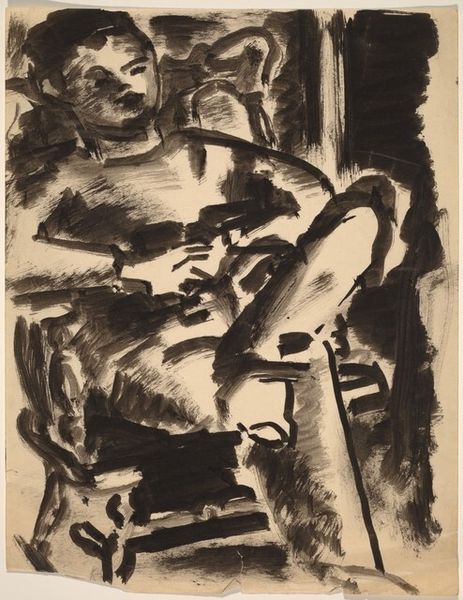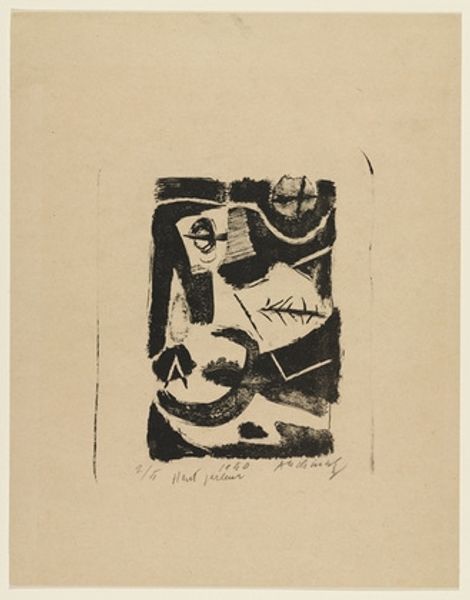
Dimensions: plate: 35 x 25.2 cm (13 3/4 x 9 15/16 in.) sheet: 44.3 x 34 cm (17 7/16 x 13 3/8 in.)
Copyright: National Gallery of Art: CC0 1.0
Curator: This is "Laquais," or "Footman," a 1937 print by Georges Rouault. The medium combines etching and monotype, creating a rich layering of ink. Editor: My initial impression is one of barely contained energy. The thick, dark outlines seem to struggle to hold the figure within. Curator: Rouault was deeply interested in the lives of the working class and the marginalized. The print medium itself, with its potential for reproduction and wider distribution, reflects this commitment. Etchings, specifically, allowed for a democratized art form, reaching audiences beyond the elite. The use of monotype then, is an interesting disruption; only one of each print is ultimately created. Editor: Looking closer, I see a sadness in the figure’s downward gaze, despite the bold colors of his uniform. The red coat, those splashes of yellow—they initially suggest something almost celebratory, but the longer you look, the more melancholic it becomes. Is that uniform a symbol of imposed servitude? Curator: The red uniform definitely draws the eye. Note how Rouault manipulates the texture within that block of color; there’s a real physicality to the ink, it's almost sculptural, it creates such depth within what could have been a flat area. That's the essence of process coming through, foregrounding the labor involved. Editor: The clown, the prostitute, the judge—Rouault returned to certain figures again and again throughout his career. The footman here almost becomes an archetype. There is that association with those medieval archetypes with his red jacket. He's trapped within his social role, his identity defined by his service, like a modern-day court jester who exists for other's entertainment, there in perpetuity. Curator: And those heavy outlines… they serve a structural purpose, yes, containing the image, but they also become almost oppressive, trapping the figure within. Editor: That’s exactly right. It's fascinating how Rouault can load a simple image with such potent symbolic weight. I won't look at a red uniform quite the same way again. Curator: I appreciate the labor and the artistic approach. Understanding the method, the physicality of production here and Rouault’s concerns as a worker himself gives a more informed reading to Rouault’s choices.
Comments
No comments
Be the first to comment and join the conversation on the ultimate creative platform.
